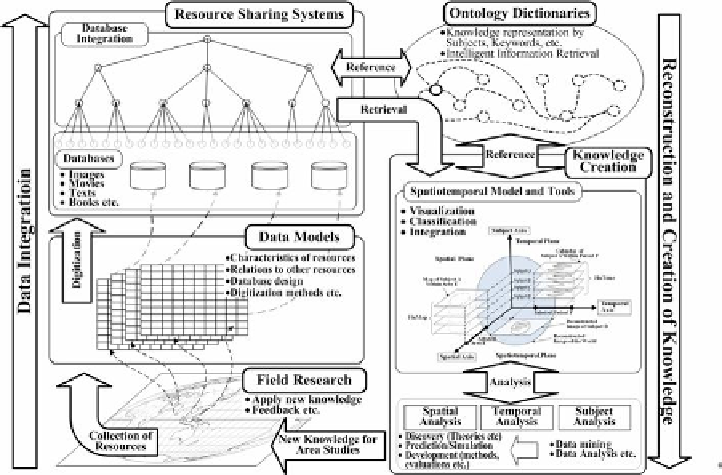Information Technology Reference
In-Depth Information
flows, and the second is the data model that gives the basic concepts of the H-GIS
research approaches and tools.
2.1 Research Model of Area Studies
Area studies can be modeled from the viewpoint of data, information and knowledge
flow as shown in Figure 1. This picture is developed to organize an overall image of
the relationships between research phases of area studies, data/information/knowledge
flows, and necessary information technologies and tools [3, 4].
Fig. 1.
Schematic Structure Model of Area Studies
Area studies are carried out in “research places” such as research fields, libraries,
archives, laboratories and so on. Research resources are collected by observing,
measuring, interviewing, reading, searching, and discovering activities. Authoring
tools, on-site data entry tools, wireless data terminals are the typical necessary
information tools in this phase [5, 6].
Collected resources are organized according to appropriate “data models”. That is,
resources are digitized and encoded depending on their disciplines (e.g., history,
economy, agriculture, ecology, anthropology, and medicine), media (e.g., texts,
images, movies, and sounds), data types (e.g., numbers, strings, and symbols), storage
media, and collection types (relations with other resources). Digitizing techniques,
media technologies, data models, metadata, and encoding methods are the main
information topics in this phase. The H-GIS is preparing for several guidelines to
digitize and organize resources.

